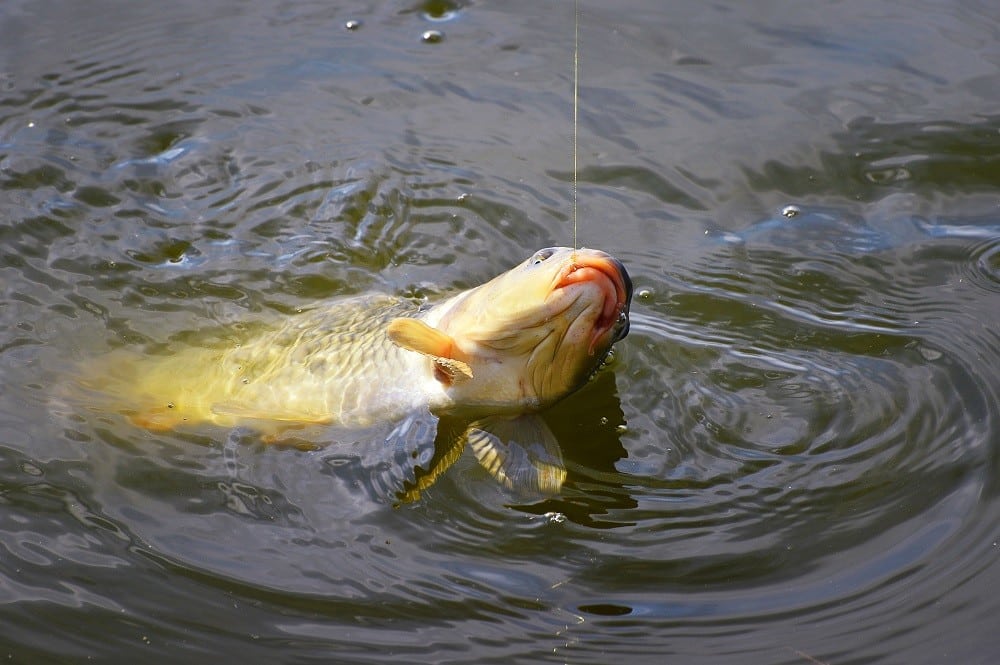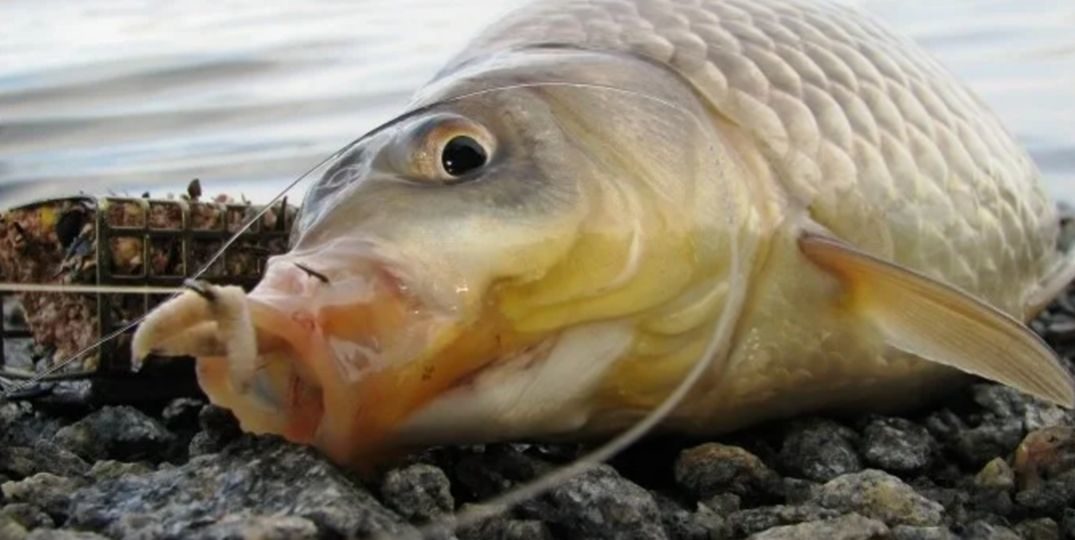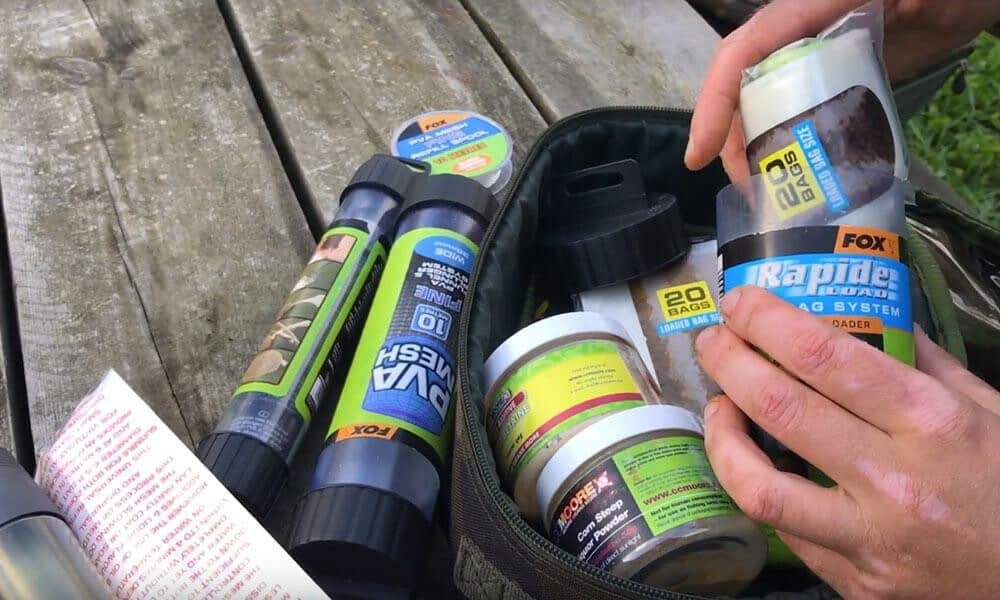Catching carp is associated with the expectation of catching a large trophy and the sensations of struggle, which are important for the fisherman, when fishing. This strong fish lives in many rivers and ponds in our country. Catching a large carp attracts with a variety of different tactics, a search for secluded places and, of course, the result of fishing. Catching carp (wild carp) on the river is in many cases much more active and interesting than catching its fellow carp on stagnant bodies of water. The carp, moreover, is stronger and sharper, more active when playing – and this is excitement and what we all love fishing for.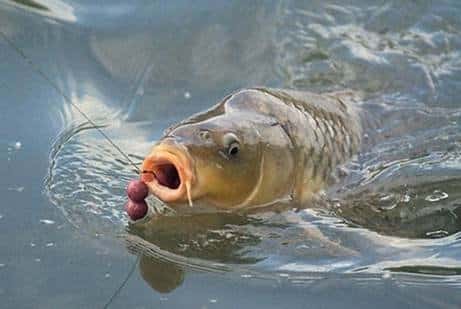
- How to find a carp on a pond
- Practical search for parking on the pond
- When and how fish spawn
- Diet
- When to catch a carp – a lover of the “warm” season
- Baits and baits for catching wild carp – what the carp bites on
- Vegetable nozzles
- Animal bait
- Artificial bait
- Lure
- Fishing tactics
- Fishing on the donk
- Feederists
- Catching on the top of the head
- Catching carp with a float rig
- Spinning carp fishing with edible silicone baits
- Поделиться ссылкой:
How to find a carp on a pond
Fishing for carp in most cases is carried out on the river and implies large and medium-sized reservoirs with an even clay bottom, where the depth is at least two meters. On solid ground, wild carp are resting and gaining strength to go to the area for feeding. As a rule, these are algae thickets and seashells. Carp also like to stand in snags and among flooded trees.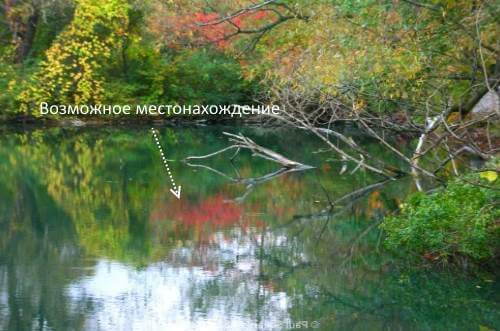
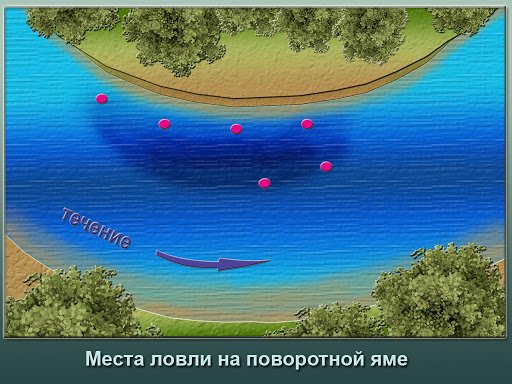
Practical search for parking on the pond
Sites for catching carp should be sought away from very noisy places, picking up large backwaters with shellfish or aquatic vegetation. An abrupt change in current when it loses speed is a priority when determining the best fishing spot. The watershed of streams in a river, if it passes into the calm water of the bay, is considered the most favorite site for finding a parking space. On these small, up to 2 meters, plateau, there is a mollusk, which is one of the main ones in the diet of fish. The depths, which smoothly turn into small braids, where a shell and pebbles are at the bottom, also have excellent prospects for catching trophy specimens. The remoteness of these areas from the coastline adds to the chances of an effective result.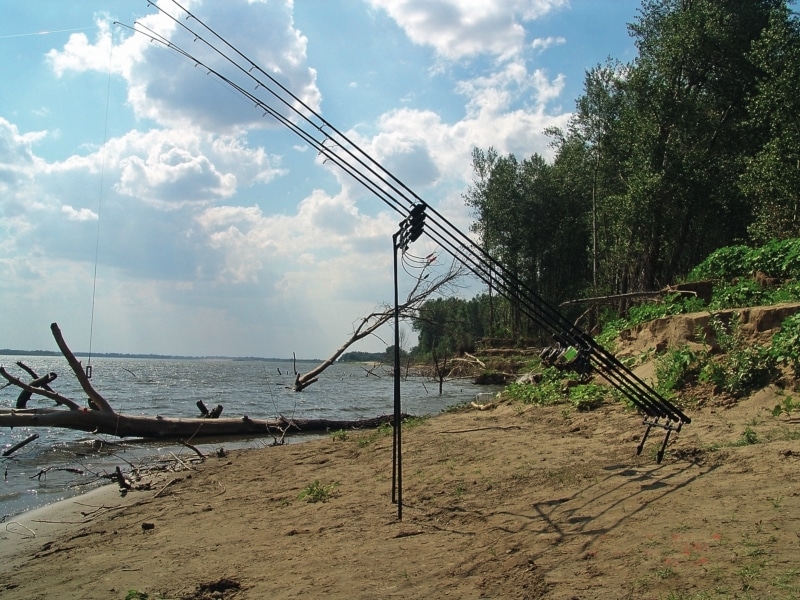

When and how fish spawn
Spawning begins when the reservoir warms up over 20 degrees. This is usually celebrated in July. The fish spawns in portions, in total there are 3 spawning exits. At the same time, the carp does not stop actively feeding. For spawning grounds, he looks for shallow water, no more than 1-2.5 meters deep and actively spawns on coastal vegetation, accompanying this action with regular jumps from the water.
Important: Active biting of fish is most often noted right there, after the spawn, while the carp can bring food to a constant diet.
Diet
The carp’s diet is diverse, it can include animal and vegetable baits. You can also catch this fish with special baits (for example, technoplankton), but natural baits are a priority. Power features:
- fish collects shellfish from the bottom;
- when insects are active, carp can feed on dragonflies, locusts, beetles;
- wheat and small berries, including rowan and cherry, that get into the water, are also included in the diet;
- summer carp fishing is often successful if you use an attachment in the form of a piece of young reed;
- caddis flies, bloodworms, daphnia, amphipods, crayfish are also to the taste of carp.
When to catch a carp – a lover of the “warm” season
Only warm water guarantees effective carp fishing. Any change in weather conditions, even a slight one, strongly changes the activity of the fish in a negative direction. This fish bites from early spring to late autumn. At the same time, carp fishing in spring is not always stable and is best celebrated in warm weather, throughout the day. You can catch wild carp in summer at constant pressure and temperature, it bites in the morning or at dawn, and is practically inactive at noon. In thick heat, the carp mainly feeds at night. In autumn, active feeding begins before the start of wintering, while feeding during the day occurs constantly. Autumn fishing is possible throughout the day from morning to night.
It’s important to know! Rainy weather at any time of the year does not improve the bite; more often, on the contrary, the carp hides and expects calmness on the pond.
Baits and baits for catching wild carp – what the carp bites on
In the warm season – late spring and summer, when fishing for carp, animal bait is usually used, and vegetable baits work best in cold water.
Vegetable nozzles
Of the plant baits, it is worth noting corn, it is the leader for catching carp in the summer. Cereal dough with garlic, vanilla and dill also works great.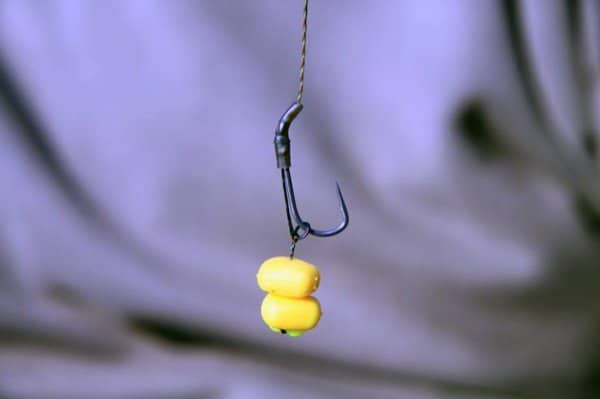
Animal bait
A bunch of worms is a universal bait for catching large carp. If you make a sandwich with the addition of maggot, then this attachment will be much more attractive. Bloodworms may also be of interest to young wild carps. Insects, crustaceans, toothless are ideal baits for wild carp, since they almost never ignore these baits, especially if the carp angler uses them in accordance with the season.
Artificial bait
The following are used in the role of artificial bait:
- small wobblers;
- edible worms and slugs;
- micro vibro-tails;
- silicone and foam rubber fish.

The use of edible rubber will significantly increase the effectiveness of the bites.
Lure
Fishing for carp will certainly be successful if the fisherman uses bait with loose components, from which light fractions are constantly emitted in the form of a cloud. Food for fishing wild carp is made on the basis of bread crumbs with the addition of pearl barley, fish pellets, concentrated attractants. It is quite effective to feed the fish by adding food to a mesh feeder and then casting it to the bottom of the reservoir. This type of feeding will not scare off the fish that have come to the point, in contrast to the constant casting of additional portions of food, and will make it possible to catch fish without pauses at the next arrival of a frightened carp to the bait spot. We must not forget that bait for one day of fishing will take quite a lot and you need to prepare for the consumption of about 40-60 kg of the composition, especiallyif tackle is used for catching carp on the current.
Fishing tactics
The principle of catching wild carp does not differ from the techniques used in carp fishing and traditional methods of catching crucian carp, whitefish and other white fish. There is only one caveat – the use of more powerful tackle, braids and fishing rods for the carp. Fishing options differ depending on the tackle used – you can catch carp with a spinning rod, a donkey and a float. When fishing on a donk, a zakidushku or a float, taking into account the special fighting qualities of the fish, an appropriate hook is also required, which is selected within the range of No. 6-10. You need to pick it up for the bait, while it can be with an elongated or shortened forend. It is best to use a monofilament line with a cross section of 0.25-0.35 mm as the main line. It makes sense to make leashes from braids 0.12-0.16 mm. They are ideal for the bottom where pebbles or shells are located,since they do not wear out so much, and because of their small section are not so noticeable, unlike thick fishing line, but they are not inferior in strength to the latter.
The main feature of catching carp is the use of long leashes within 0.5-1 meters.
This length is due to the caution of the wild carp. As a rod, it is best to choose tackle for carp fishing, with a powerful blank and high test. The bites of the carp are the same as in all carp fish. He confidently swallows the bait and then continues to search for food at the bottom. This bite will practically not require hooking, the fish self-picks up on its own, so you need to constantly monitor the tackle without a baitrunner, otherwise you can simply lose them. Fishing takes place with constant unpredictable departures of a frightened carp in different directions, so he tries to hide in a snag or other places that are suitable for this. The chaotic movement of the fish and the loss of control of the fishing line tension by the fisherman threatens the entanglement of the rig and its breakage against sharp stones. The raising of the carp from the water and the first breath of air does not indicate that he is tired,the fish fights to the end, even being on the shore. The fisherman must be on the alert all the time and not lose vigilance until he puts the fish into the cage. How to catch carp with boilies – classic rig: https://youtu.be/a7mocLWnrlA
Fishing on the donk
Donka for carp is used for coastal fishing or for fishing from a boat. In the latter case, fishing takes place according to the principle of catching bream. The boat must be securely anchored and rigged downstream. Moreover, bait is used, which transfers the dregs to the fishing site. For coastal fishing, it is best to use a rubber donk. In this way, fishing is carried out without feeding, the leashes are fed directly to the carp’s parking lot. The leashes are equipped with small weights that allow the attachment to be at the bottom. The disadvantage of this method is that there is no way to fish in a snag. Advantages – in the noiselessness of lowering the bait and fishing in strong winds.
Feederists
When fishing for carp on a feeder, montages are used that do not differ in particular sensitivity to determine the bite. The classic symmetrical hinge is the perfect fit. The feeders are rectangular, small in size. Extra long leashes and carp hooks are great for catching carp.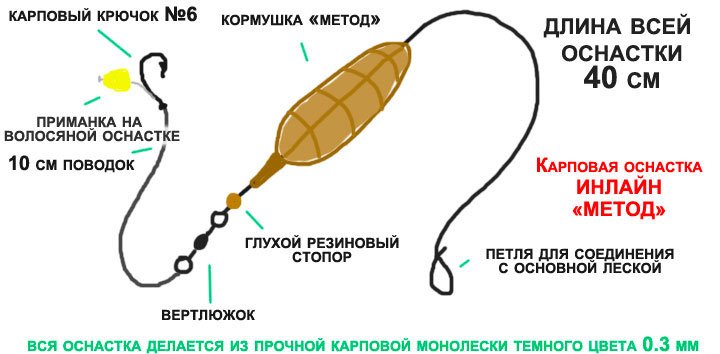
Catching on the top of the head
They fish on the top with the help of the bottom rig, assembled on the spinning frame. For the bait, a pressed cake is used. The briquettes are mounted on a lead base, while at the same time it serves as a weight for the equipment. Carp hooks (as a rule, 4 pieces in the corners) of small sizes and the color of the bait are stuck into the top. While finding the bait, the carp actively collects food, while pulling in the hooks. As a result, hooking and further fishing of fish occurs. Catching carp on donkey-zakidushki on cake (top): https://youtu.be/2-JuqTGfTnA
Catching carp with a float rig
Fishing for carp on a float takes place mainly with the help of a Bolognese or match rod. The swing, due to the limited cast, does not allow ensuring all conditions for maintaining the silence and camouflage of the fisherman. For long-distance casting, special shipped sliding floats are used. Their working weight is generally in the range of 5-10 grams, while the optimal length is 25-30 cm. The weights are attached at the bottom of the float, the leash is knitted about 1 meter.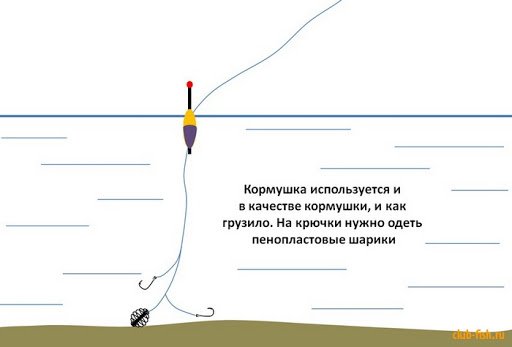
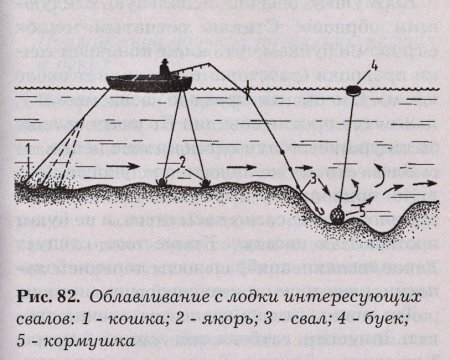
Spinning carp fishing with edible silicone baits
In spring and summer, fishing for large carp with small wobblers and jig lures is very common. The role of baits is played by small edible worms, slugs, twisters. Wild carp prefers passive rubber when the spinner sets the animation to the bait. The fisherman spends the bait in promising places using a regular jig step, but unlike pike fishing, the ascents are made not abrupt, but protracted. Pause dragging is also used. This method is effective on passive fish. The carp intuitively swallows the bait rather than purposefully catching up with it. Effective artificial imitations of insects and underwater animals will be a good option when fishing for wild carp with a spinning rod. https://youtu.be/JeWzmkn8erY Fishing for carp – beautiful video: https://youtu.be/_9UtXFJuExg The baits and the bait on the hook must be alternated all the time,to choose the one that will be the most attractive for the carp in a certain season. You also need to vary the tackle, look for new sites and approaches to fish. Since the bites of the savage carp are very sharp, you must not miss this moment and hook it. The caught handsome man must be slowly fished out with the used tackle, exhausting the excess fishing line, and then carefully brought into the landing net.
